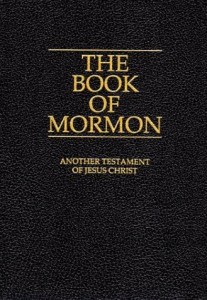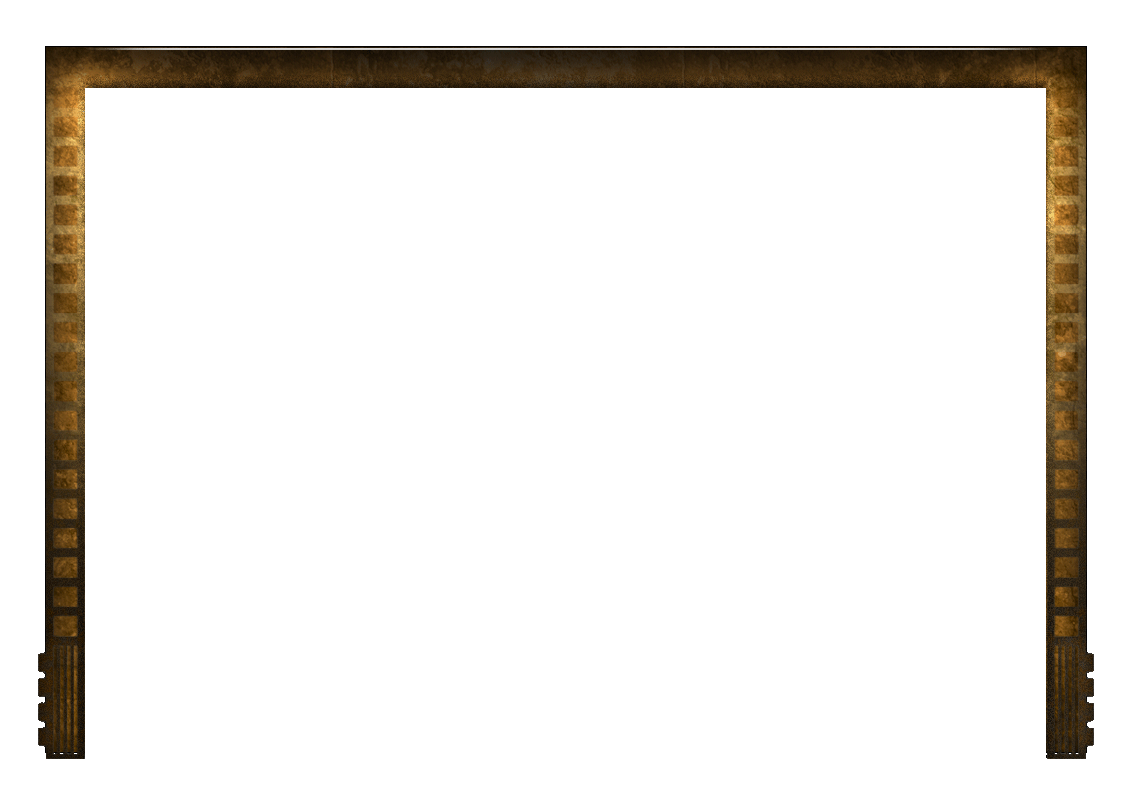Hebraisms and other Literary Forms
Journey of Faith tracks the journey started in 600 bc by the Israelite Prophet Lehi and his family as they made their exodus from Jerusalem across the Arabian desert to the coast, and there to the New World. Lehi’s son, Nephi, begins the account in 600 bc, preserving it by engraving on metal plates. The narrative did not come to light until the 1820s, when by divine revelation, Joseph Smith was directed to the plates and unearthed them from a hill in upstate New York. From them he translated the Book of Mormon: Another Testament of Jesus Christ.
 The Book of Mormon contains accounts by many different people, mostly prophets, over a thousand years, harmonized and abridged into a whole narrative by a father and son, Mormon and Moroni, who lived around 400 ad. The account centers on the visit of Jesus Christ to the Nephite people in the Americas after His resurrection. Although discovery of archaeological evidence of the Nephite civilization in the Old and New World is in its infancy, a reasonable amount of work has been done on the text itself that sheds light on its ancient origins.
The Book of Mormon contains accounts by many different people, mostly prophets, over a thousand years, harmonized and abridged into a whole narrative by a father and son, Mormon and Moroni, who lived around 400 ad. The account centers on the visit of Jesus Christ to the Nephite people in the Americas after His resurrection. Although discovery of archaeological evidence of the Nephite civilization in the Old and New World is in its infancy, a reasonable amount of work has been done on the text itself that sheds light on its ancient origins.
The first part of this article presents some snippets of information gleaned from the text that point to its ancient setting and the character of its original language as inscribed on metal plates by Nephite and Jaredite authors.[1]
One of the most distinct characteristics of the language in the Book of Mormon is the somewhat literal translation of what is now obvious are Hebraisms. As Professor Donald W. Parry asserts, “Because some form of Hebrew was used among the Nephites, the Book of Mormon reads like an ancient Hebrew book—even in its English translation.”[2] Parry gives us just one of many examples with what is termed plural amplification. He explains that “in order to amplify or emphasize an idea, biblical Hebrew sometimes uses a noun in the plural when a singular is expected.” Here are some examples
- there shall be bloodsheds (2 Nephi 1:12)
- the understandings of the children of men (Mosiah 8:20)
- great condescensions unto the children of men (Jacob 4:7)
- labor with their mights (Jacob 5:72)
- great slaughters with the sword (1 Nephi 12:2)[3]
In his work on the Original and Printer’s Manuscripts, Royal Skousen has uncovered one frequent expression that does not ring true in English, but makes perfect sense in Hebrew:
In the original text of the Book of Mormon we find a number of occurrences of a Hebrew-like conditional clause. In English, we have conditional clauses like “if you come, then I will come,” with then being optional. In Hebrew this same clause is expressed as “if you come and I will come.” In the original text of the Book of Mormon, there were at least fourteen occurrences of this non-English expression.
A stunning seven examples of this are found in one passage in the Original Manuscript, Helaman 12:13–21, as detailed by Skousen:
- 13 yea and if he sayeth unto the earth move and it is moved
- 14 yea if he sayeth unto the earth thou shalt go back that it lengthen out the day for many hours and it is done . . .
- 16 and behold also if he sayeth unto the waters of the great deep be thou dried up and it is done
- 17 behold if he sayeth unto this mountain be thou raised up and come over and fall upon that city that it be buried up and behold it is done . . .
- 19 and if the Lord shall say be thou accursed that no man shall find thee from this time henceforth and forever and behold no man getteth it henceforth and forever
- 20 and behold if the Lord shall say unto a man because of thine iniquities thou shalt be accursed forever and it shall be done
- 21 and if the Lord shall say because of thine iniquities thou shalt be cut off from my presence and he will cause that it shall be so. [4]
Perhaps the most celebrated literary form in the Book of Mormon is that of chiasmus. First discovered in the Book of Mormon by John W. Welch while he was on an LDS mission in Regensburg, Germany, chiasmus or poetic parallelism is a nested ancient Hebraic form of explaining an idea, where the ideas are set out in series of statements and then repeated with the first being last. The central theme is found, not surprisingly, in the center of the chiasmus.
Welch describes the first chiasmus he confirmed in the Book of Mormon:
I do not believe that I ever would have found this through my own intellectual efforts. Indeed, I probably would not have found it at all except for the typesetting in that particular edition of the German Book of Mormon, for the two central words in Mosiah 5:11 were stacked right on top of each other. In good typesetting, one should never stack words at the end of a line, because a stack can trip the eye as it goes from the end of one line to the beginning of the next. But as I read down the left column on this page, the two words Übertretung and Übertretung jumped right out (that German translation of the two English words transgression and transgress had used the same word). I immediately looked in the line below and saw the word ausgerottet (meaning blotted out) and in the line above, again, ausgerottet (blotted out). And above that, linken Hand (left hand) of God, and down below, linken Hand, again. The chiastic pattern in this passage appeared instantly, as follows:
“And now it shall come to pass, that whosoever shall not take upon him the name of Christ must be called by some other name; therefore, he findeth himself on the left hand of God. And I would that ye should remember also, that this is the name that I said I should give unto you that never should be blotted out, except it be through transgression; therefore,” and this word marks a turning point, “take heed that ye do not transgress, that the name be not blotted out of your hearts. I say unto you, I would that ye should remember to retain the name written always in your hearts, that ye are not found on the left hand of God, but that ye hear and know the voice by which ye shall be called, and also, the name by which he shall call you.”[5]
Hugh Nibley and others have done extensive research into the names used in the Book of Mormon, some of which have Egyptian as well as other Semitic roots. The study of these names, a project known as the Book of Mormon onomasticon spearheaded by BYU Professor Paul Y. Hoskisson, is ongoing.[6] But here is one intriguing observation by the great Hugh Nibley:
There is one name that always gave this writer a jolt: Hermounts. What a name! Like nothing you ever heard before. . . . What is Hermounts? It is not a person; it is the name used to designate wilderness country, “which was infested by wild and ravenous beasts” (Alma 2:37). Right away we thought of Min (good old Book of Mormon Ammoron) of Hermonthis, the Egyptian Pan, the God of wild places and wild animals. Some explain the name Hermonthis as meaning “House of Month” (good old Book of Mormon Manti!), referring to the shrine of the southern frontier. “Month” is the patron of war and colonization, and next to Ammon, Manti is the most common name of the persons and places in the Book of Mormon. Whatever the real explanation, Hermounts does not offend the ear anymore. If the Egyptians want to designate their wild country as Hermonthis and the Nephites as Hermounts, that is their business.[7]
[1] The Neal A. Maxwell Institute for Religious Scholarship has published several books that throw light on the ancient origins of the Book of Mormon from the text alone. For instance, Daniel C. Peterson, Donald W. Parry, and John W. Welch, eds., Echoes and Evidences of the Book of Mormon (Provo, UT: FARMS, 2002); Noel B. Reynolds, ed., Book of Mormon Authorship: The Evidence for Ancient Origins; and Reynolds, ed., Book of of Mormon Authorship Revisited: New Light on Ancient Origins (Provo, UT: FARMS, 1997). The Institute’s flagship publication, now titled Journal of Book of Mormon and Other Restoration Scripture, has published many articles dealing with internal and external evidences over the years.
[2] Donald W. Parry, “Hebraisms and Other Ancient Peculiarities in the Book of Mormon,” in Echoes and Evidences.
[3] Parry, “Hebraisms.”
[4] Royal Skousen, “The Original Language of the Book of Mormon: Upstate New York Dialect, King James English, or Hebrew?” JBMS 3/1 (1994).
[5]John W. Welch, The Discovery of Chiasmus in the Book of Mormon: Forty Years Later,” JBMS 16/2 (2007). Since that time many parallelisms have been identified. See John W Welch, Chiasmus in Antiquity; and Donald W. Parry, Poetic Parallelisms in the Book of Mormon: The Complete Text Reformatted (Provo, UT: Neal A. Maxwell Institute, 2007).
[6] For an introduction to this project, see Paul Y. Hoskisson, “Seeking Agreement on the Meaning of Book of Mormon Names,” JBMS 9/1 (2000).
[7] Hugh Nibley, The Prophetic Book of Mormon, (Salt lake City, Deseret Book, 1989).

